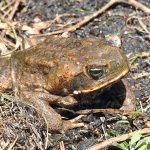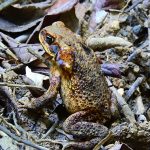CANE TOAD
The Cane Toad: An Unwelcome Visitor
The Cane toad, also known as the Bufo toad or Marine toad, is a species of toad native to Central and South America. It was introduced to various regions around the world as a method of biological pest control due to its ability to eat agricultural pests such as beetles and caterpillars. One of the most infamous introductions occurred in Australia.
A Journey Across the Continent
In 1935, cane toads were introduced to Australia, specifically to the state of Queensland, in an attempt to control the population of cane beetles, which were causing significant damage to sugar cane crops. The introduction of cane toads turned out to be a disastrous ecological mistake. The toads were not effective in controlling the cane beetles, but they rapidly reproduced and spread throughout northern Australia.
The Toad’s Impact
The introduction of cane toads has caused disruptions in Australian ecosystems. Predators that are susceptible to cane toad toxins have declined, while the toad population continues to spread and affect native species.
The cane toads have a few characteristics that contributed to their ecological impact and made them a menace to Australia’s native wildlife: Cane toads secrete a potent toxin from their skin, which acts as a defense mechanism against predators. Many Australian predators, including snakes, goannas, and some mammals, are not adapted to this toxin and can die from ingesting or even mouthing a cane toad.
Reproduction
Cane toads are highly prolific breeders. A single female cane toad can lay up to 35,000 eggs annually, leading to rapid population growth and further strain on native ecosystems. This rapid reproductive rate helped them establish large populations quickly.
Diet
Cane toads are opportunistic feeders and will eat almost anything they can fit into their mouths, including insects, small vertebrates, and even pet food left outside. This broad diet allows them to compete with native species for resources.
Human Responses
Despite extensive efforts to control their spread, cane toads have expanded their range across northern Australia and continue to pose a threat to native wildlife. Various control measures have been attempted, such as trapping and physical barriers, but eradicating cane toads entirely remains a significant challenge.
The cane toad invasion in Australia serves as a poignant example of the unintended consequences that can arise from the introduction of non-native species into new environments. It highlights the importance of careful consideration and risk assessment before implementing any form of biological control.


